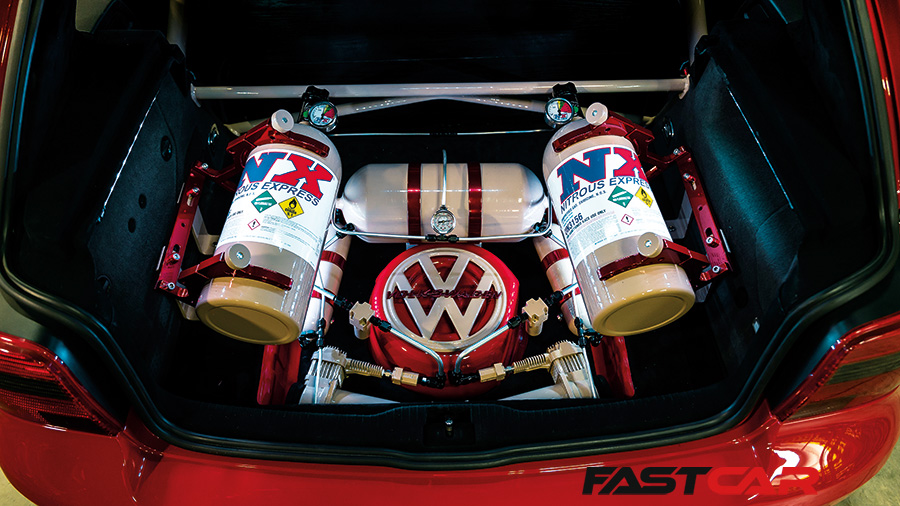Surrounded by hype, nitrous oxide can be a beneficial tool to unlocking your engine’s power potential. Here’s what you need to know.
When it comes to car tuning, nitrous oxide is on the extreme side of things. Used in drag racing, it’s a tool that allows for short bursts of increased performance and better acceleration. But how does it work and why does it improve performance. We investigate.
How did nitrous oxide come about?
Nitrous oxide entered mainstream popular culture thanks to the Fast And Furious series of films. However, its origins go back much further than that, way back.
Nitrous oxide has been around longer than you might at first think. It was first discovered in the 19th Century, but its potential properties were not recognized until much later when it was introduced as an anesthetic — for which it’s still used today. It was only during the Second World War that its massive performance-enhancing abilities were recognized. As a result, it was utilized in certain types of planes to make them fly faster and work in high altitudes where air content is thinner.
The introduction of the jet engine soon made nitrous obsolete for military purposes. However, it was quickly picked up by the large and popular drag racing communities across America in the search of power. From there, it soon gained momentum until it reached street-driven cars all over the world.
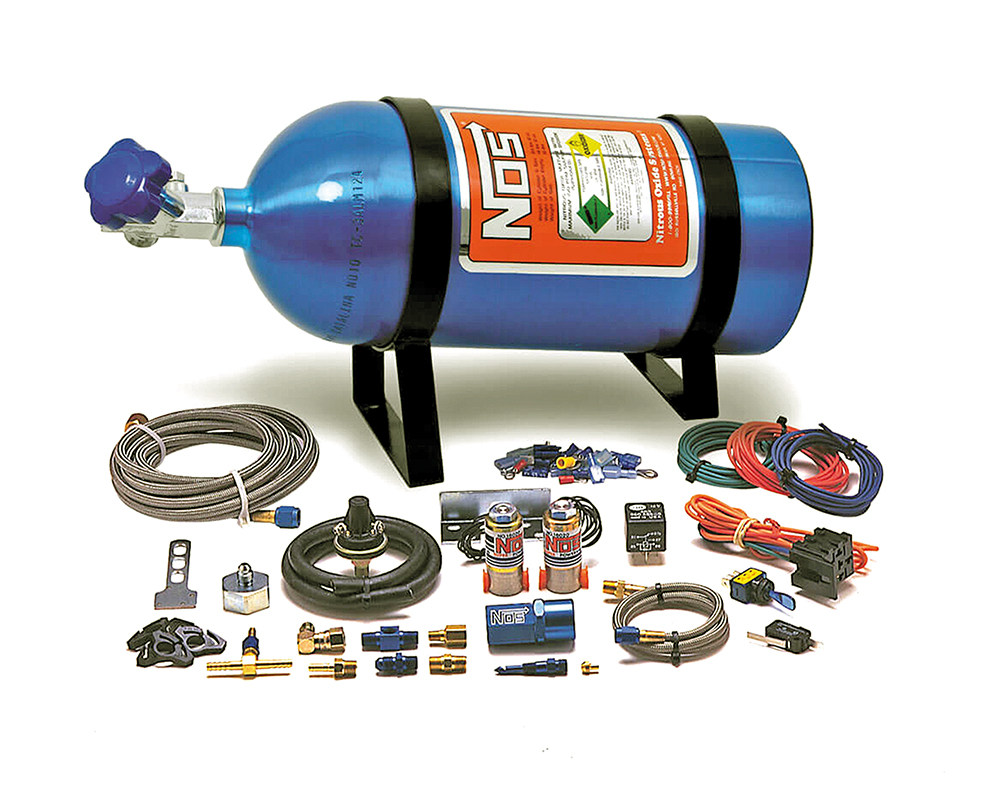
How does nitrous oxide work?
Nitrous works in more than one way, but primarily it all adds to the same effect. It gives your engine more oxygen to burn, which in turn allows more fuel to burn creating more power. To gain a better understanding of how nitrous works you need to know two things.
Firstly, it contains around 16 per cent more oxygen than air. Secondly, nitrous is a liquid that boils to become a gas. Therefore, for it to work properly and to its full potential, it’s imperative to make sure it’s still in liquid form as it reaches the intake manifold. This will maximize the heat exchange with the intake charge.
It’s the first immediate effect of this heat exchange that offers a large gain through the dramatic reduction of intake temperatures as the surrounding air is cooled; something that is especially important when it comes to turbo applications. Also, as a gas displaces more than a liquid, injecting in this form results in more charge in the cylinders. As it displaces less air, it’s through this massively-increased oxygen content that it allows more fuel to be burnt.
Nitrogen & oxygen
Its benefits aren’t over yet though. When the heat in the cylinder from the combustion process reaches around 550 degrees F, the nitrous gas will disassociate into its two parts; nitrogen and oxygen. It’s these two parts that work together to create the effects they do. The oxygen increases the temperature and with it the burn rate as the nitrogen helps to buffer this excess heat. This in turn reduces the chance of detonation and therefore failure.
At this point it is still a controlled burn so the increase in oxygen and heat rapidly speeds up the combustion process by increasing the flame speed and reaching peak temperature more quickly. It’s important to keep an eye on what the engine is doing if using large amounts of nitrous, as temperatures increase further. Retarding the ignition helps keep control of the heat, reducing chances of detonation.
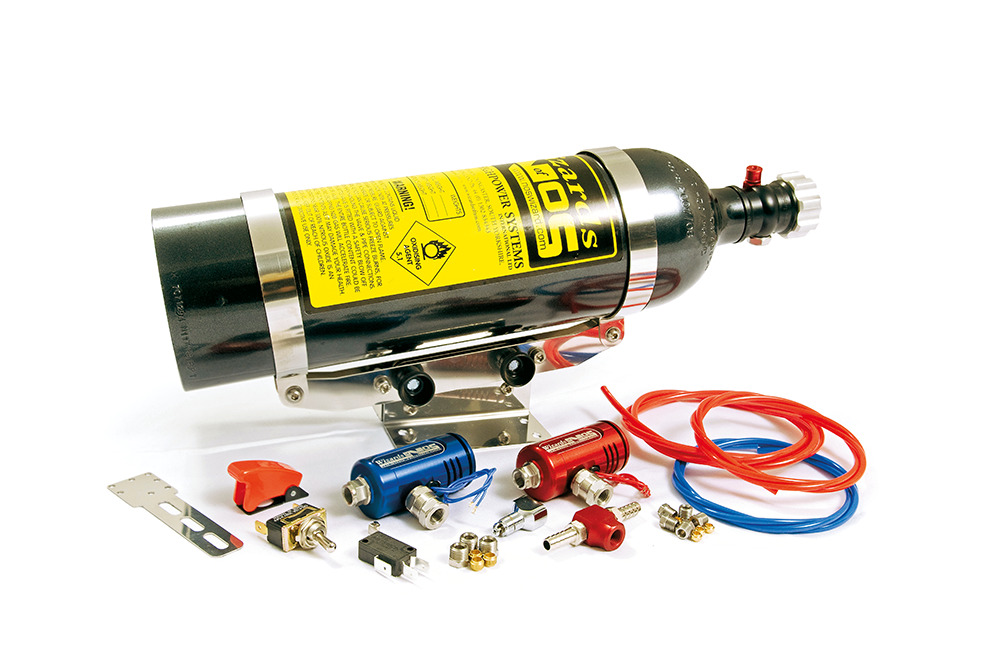
Can you put nitrous oxide on any car?
Nitrous oxide can work on any car, or any engine. Wizard Of Nos (WON) have fitted kits to everything from diesels to Ferraris and even chainsaw engines. But before fitting, it’s important to ensure your car and engine are in good condition which includes things that will take the added strain, such as the clutch. Performance brakes are also a necessity as many underestimate how much nitrous will actually improve the performance. It’s worth doing a full service, especially for the fuel system. A new filter and a check to make sure the pump and lines are in good working order.
The spark plugs will need to be changed for ones a heat grade colder. Nitrous can increase cylinder temperatures and melt plugs, which leads to detonation. As a strong spark is always needed, a full overhaul of the ignition system is also required. Lastly, it’s always worth doing a leak-down test to ensure the car has no other problems that cannot be seen easily. Older engines can be in tired condition, but it’s always worth checking.
What are the main components of a nitrous oxide kit?
There isn’t that much to a kit when you break it down. We took the chance to take a close up look at the specially developed WON kit, which is carefully designed to ensure liquid reaches the engine through keeping pressure high and the temperature low.
Bottle and bracket
The most important thing to remember is that it’s liquid in the bottle, not gas. The bottle has a dip tube in it, like a paint can, so mounting the bottle at the right angle is important. The simple rule is to make sure the valve is at the very highest point it can be. It’s also worth noting that as it’s a liquid, it suffers from a surge effect on hard cornering. This needs to be taken into account if the car is track-orientated by mounting the bottle more upright.
Arming switches and triggers
To activate the solenoids and let the nitrous pass through there needs to be a trigger and switch. The toggle switch will arm the system but nothing will happen regardless of whether it’s on or off. The nitrous will only inject when at full throttle, using a micro switch fitted either under the accelerator pedal or on the throttle body. These can be tricky to fit. WON developed a throttle position unit which can be set to trigger at any position you want, although at least three-quarters throttle is recommended.
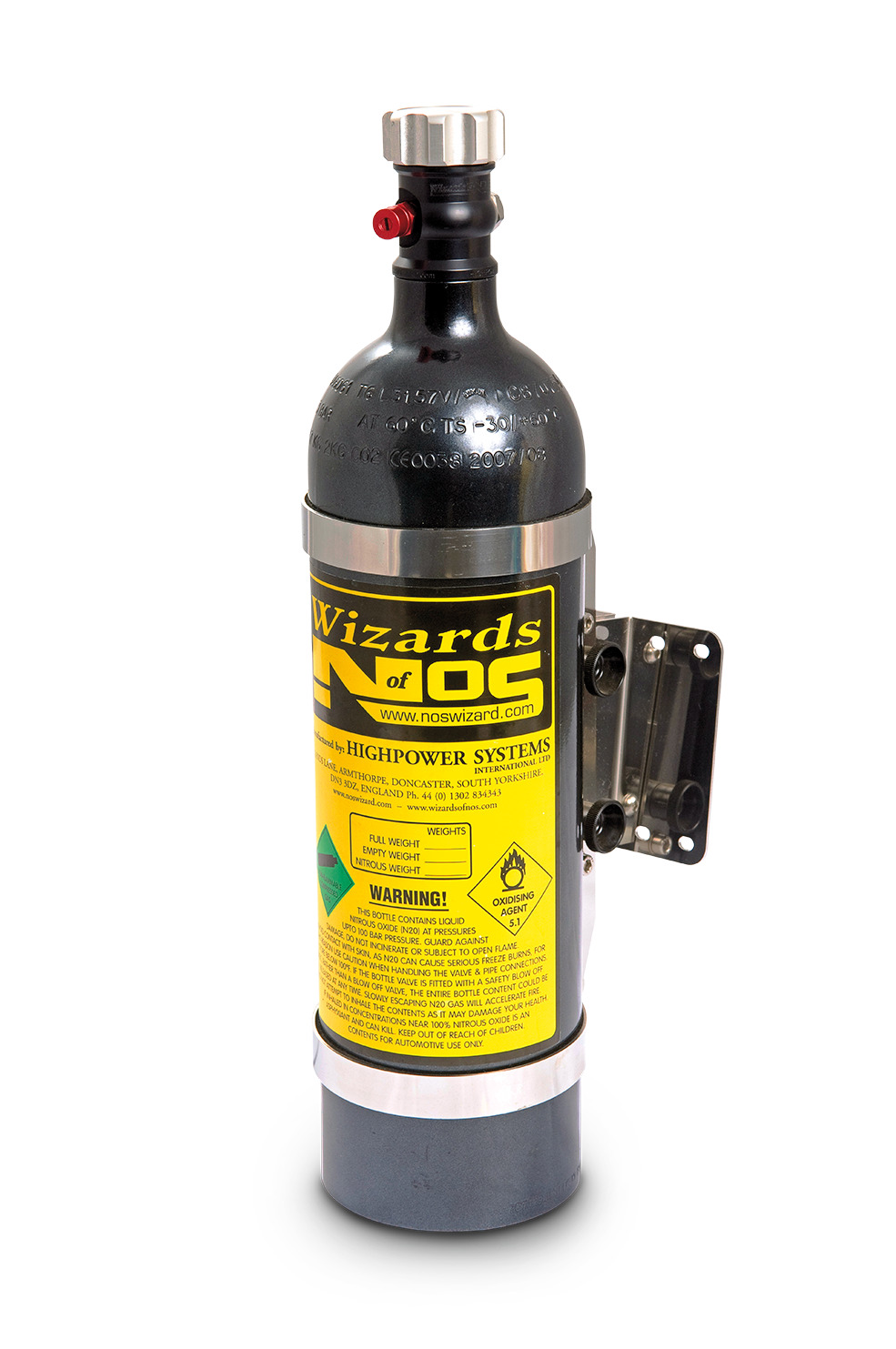
Injectors
These actually inject the nitrous into the intake system. They need to spray a mix of fuel and nitrous together depending on whether the kit is a wet or dry system. Distributing the nitrous is easy due to the high pressure. It’s the fuel that’s the problem to get right, so these injectors are designed to give a crossfire spray pattern which is better for atomization of the two substances.
Lines
These deliver the pressurized nitrous from the bottle to the solenoid. They need to withstand general wear and tear from use and fitting as well as the continuous high pressures nitrous runs at, which is normally around 1000psi at peak point. WON use nylon lines that are designed to run at 2000psi peak with a burst pressure of 6000psi and being made of nylon they are much easier to work with.
Longer and larger internal-diameter lines mean more chance of pressure dropping, temperature increasing and turning into gas before it reaches the cylinders. As a result, they need to be kept as short and small as possible unless larger doses of around 75-100bhp are used.
Distribution blocks
Distribution blocks are only needed for a direct-port kit that uses four injectors; one for each cylinder. These are designed to give even flow and ensure there’s no chance of pressure drop. As with all lines the length of pipes to and from these should be as short as possible.
Solenoids
To allow the pressurized nitrous to reach the engine, the kit relies on solenoids to open that are triggered electronically. The WON kits use a solenoid that allows the nitrous to take the most simple and unrestrictive path through to ensure the high pressure from the bottle and lines is maintained. The solenoids are also designed so they can be pulsed. This means that when they are linked to a controller, they can carefully ration the amount of nitrous that passes through them. They also incorporate a metering jet which increases response and makes them more efficient.
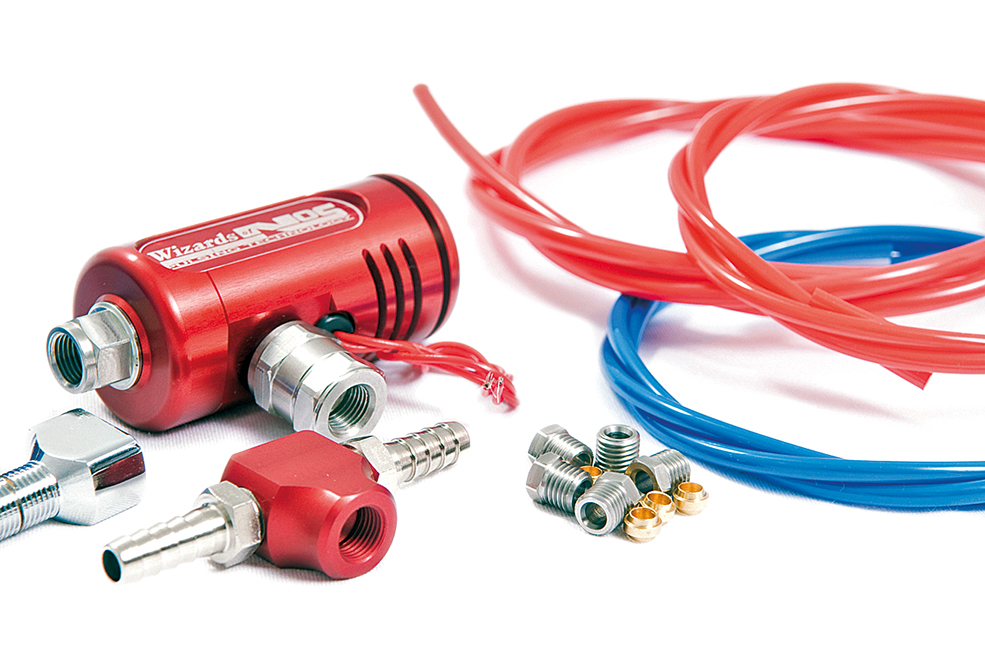
The different nitrous oxide kits
Dry kits
These kits do not use an extra fuel solenoid to deliver the fuel. Instead, they rely on the engine’s current set up and one nitrous solenoid. This can work very well but only if you have a very clever and compatible ECU that is able to inject the large amounts of extra fuel needed for when the nitrous is triggered. Dry systems can’t be used on engines with carbs. Avoid trying to cheat the fuel pressure regulator into giving more fuel too. This generally results in failure as it either doesn’t make power or melts the engine.
Wet kits
This type of kit is the more common set-up found in most applications. As a majority of cars cannot run a dry set up sufficiently, wet kits offer an additional fuel supply from a designated solenoid as well as one for nitrous. They tap into the car’s fuel supply near the inlet manifold and therefore rely on the standard fuel pressure and pump. There’s more control on offer with a wet kit. Using something like a progressive controller will make the most of this by strategically delaying and monitoring the supply.
Direct port
This kit is just like a single injector set up but uses four injectors instead; one for each cylinder. A distribution block from the solenoid delivers an even amount of nitrous and fuel to each of the injectors. These are mounted much closer to the inlet ports and should be angled to spray right into cylinders themselves ideally.
For this reason, they are harder to fit and more expensive; but as it’s more likely to inject liquid exactly where you want it, more power is often produced and response is increased. The knock-on effect is it will use less nitrous to achieve a given result. This is the only option for any engine running a twin carb or throttle body set up.
Single injector
As the name suggests, this is simply a nitrous kit (wet or dry but normally the former) that uses only one injector to inject the mixture into the intake system. To give an even distribution it is normally fitted just after the throttle body. This allows for the inlet manifold’s characteristics to deliver the nitrous evenly to all the cylinders.
For this reason, it’s easier and cheaper to install and it will come in more progressively. This makes it easier on drivetrain components and gives less chance of clutch slip. However, as the nitrous has further to travel before it reaches the cylinders, it has more chance of turning to gas. In addition, on some applications it isn’t possible to use. If the throttle body is mounted lower than the inlet valves, for instance, then the mixture will have problems reaching the engine. If there is no single shared throttle body or carb then this kit can’t work either.
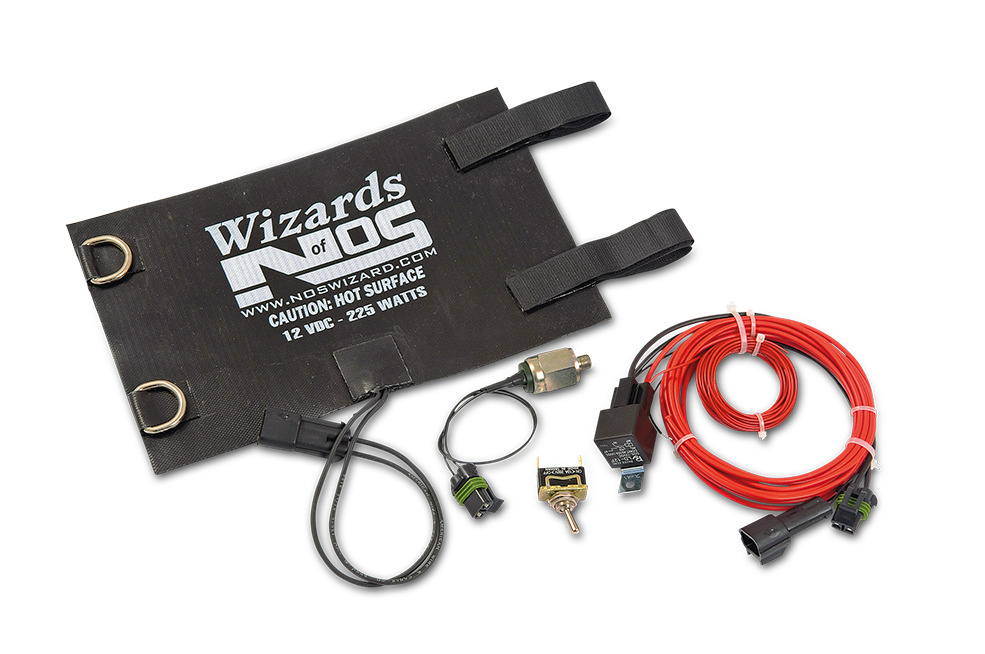
Nitrous oxide accessories
Bottle warmers
These are jackets that fit over the bottle to warm it. This increases the pressure inside the bottle and therefore ensures the nitrous that reaches the jets is at the pressure it should be. Hot and cold days both have an effect on the bottle pressure, so this will help to stabilize it.
Purge kits
The plume of gas you see some cars give off on the start line at the drag strip is simply gaseous nitrous being vented off to atmosphere through a purge kit. It brings liquid up to the solenoid ready for immediate use. That being said, only bigger kits using braided lines realistically need it, otherwise it’s just for the pose factor.
Controllers
The most important add-on of all; traction control for nitrous. A basic unit simply pulses the solenoids open and shut to deliver smaller amounts of nitrous as and when you want it. This means it can gradually deliver a larger and larger shot progressively rather than all at once. In turn, allowing the engine to slowly consume more nitrous when it can. It’s kinder to the drivetrain, helps acceleration times and is more efficient. It also allows a much bigger dose; increased air speed at higher speed and rpm means the nitrous is more diluted with air, and therefore capable of consuming more. Clever versions have extras such as recognizing what gear you’re in and increasing the dosage it injects throughout the gear. They also enable safety features, such as delaying injection time until after the clutch is disengaged.
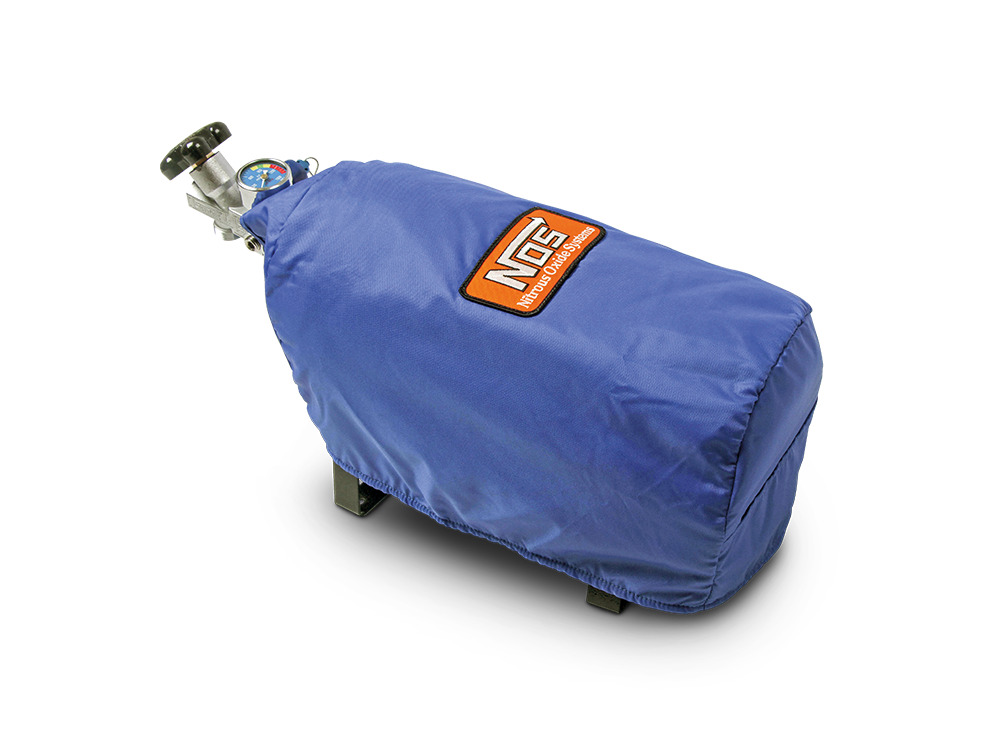
Words: Simon Homes. Photos: Chris Wallbank.

